#queen mary of demark
Text

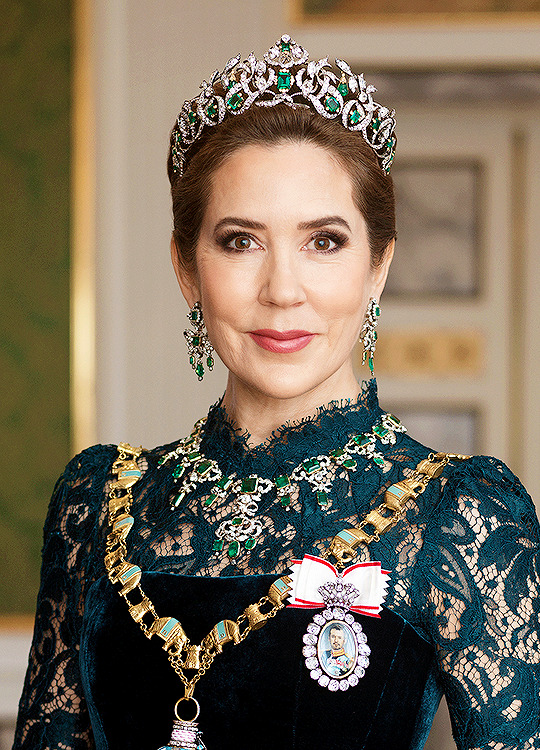
Danish Royal Family - The Queen wore Queen Caroline Amalie of Denmark's Emerald Parure Tiara for the first time and the new King's portrait order, which is reserved for female members of the Royal Family in her first official gala portraits. (Photo by Steen Evald) | April 25, 2024
#royaltyedit#theroyalsandi#queen mary#queen mary of demark#queen of denmark#danish royal family#my edit
255 notes
·
View notes
Photo
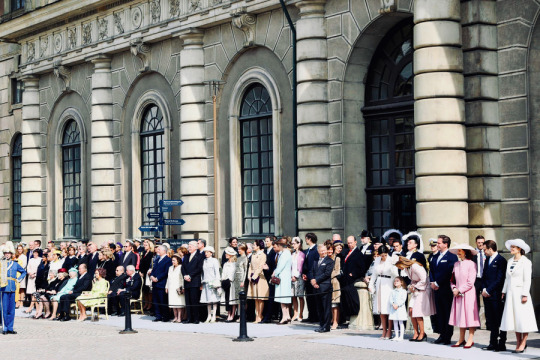
#Queen Margrethe#King Juan Carlos I#Queen Sofia#Princess Martha Louise#Queen Mary#Princess Sofia#Princess Estelle#Princess Madeleine#Queen Silvia#Prince Daniel#Crown Princess Victoria#Demark#Spain#Norway#Sweden#2016
12 notes
·
View notes
Note
Is it just me or is Crown Princess Mary coming across as really tone deaf and out of touch?
I mean with the current climate in Denmark, the pandemic, poverty etc. she’s acting so selfishly and narcissistic
I was discussing this with a friend earlier.
I get that she is turning 50, but I know I have counted over 10 different photos now.
Kind of feel like “you do you girl” but it’s a little over the top. Just think, Kate will be Queen of the UK one day. The most popular monarchy in the world and she released 3 photos for her 40th birthday where she was minimal makeup, natural hair, and a pair of earrings. Yes her dresses were designer, but she kept the overall look, natural and simple.
Here we have Mary who is Crown Princess of Demark…a country of 5.8 million people versus Kate with a country of 68 million.
Mary isn’t Queen yet either, so I just imagine it will get worse.
I do believe she loves her husband and children very much and is devoted to them. I also admire that she learned the language of her husband and educated herself on the history and culture of her adopted country.
I, unfortunately, am not familiar with the economic climate of Denmark. I think it’s a beautiful country and I would like to visit one day.
But I do think Mary has gone a little over the top.
22 notes
·
View notes
Text


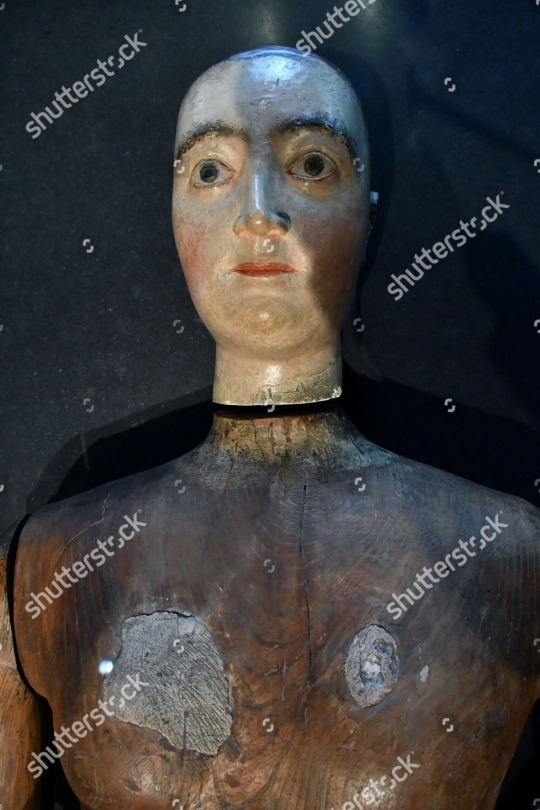
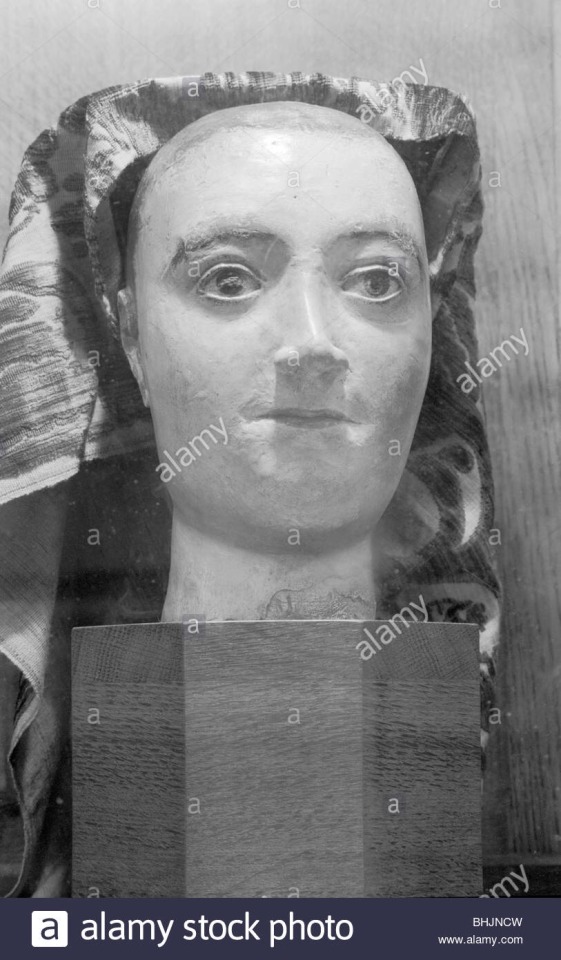
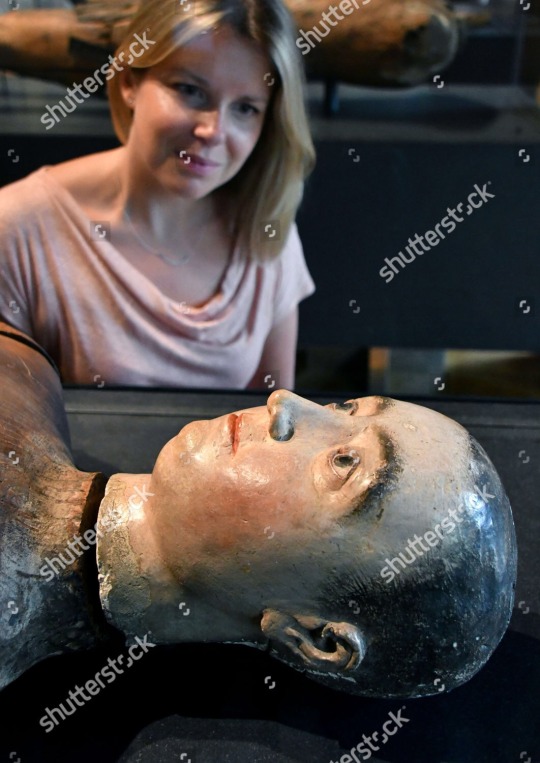
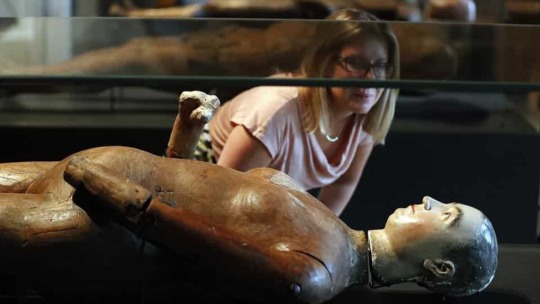
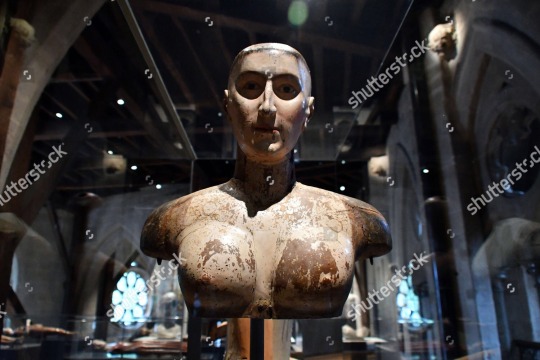
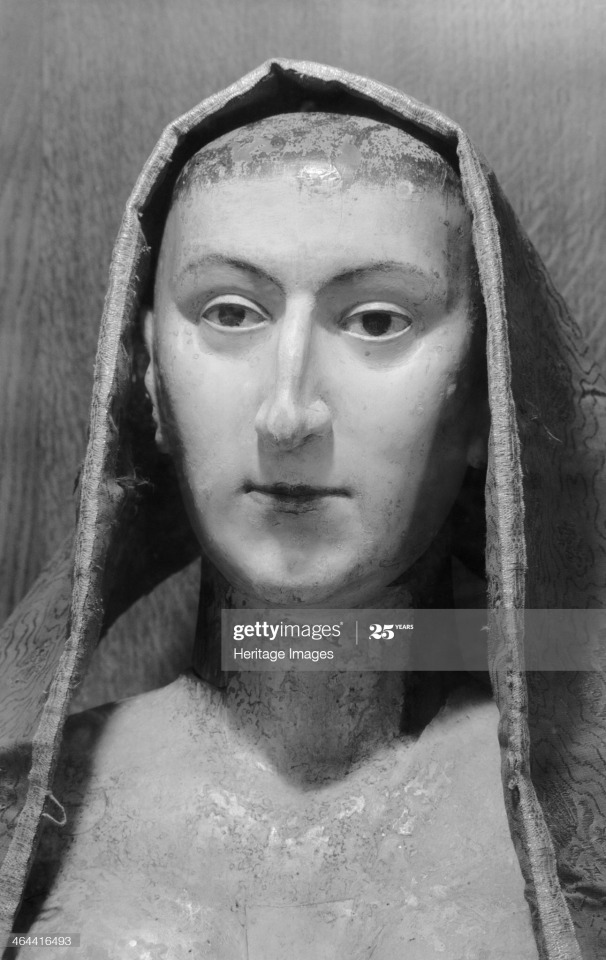
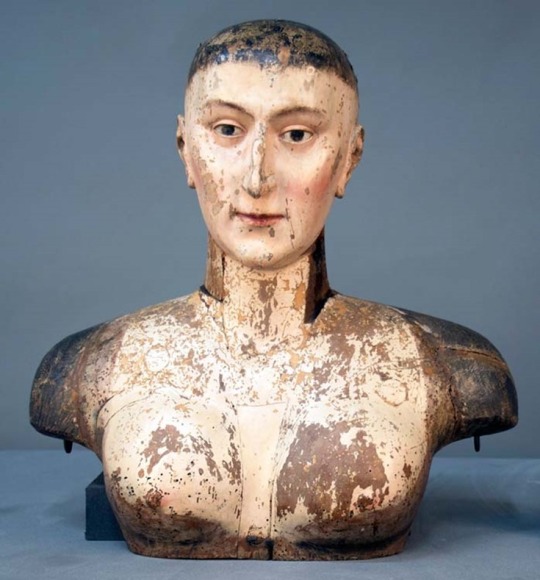
Wooden funeral effigies of queens Anne of Bohemia (wife of Richard II), Mary Tudor and Anne of Denmark (wife of James I).
The body of Mary Tudor’s effigy still exists, and has a distended stomach. Mary famously suffered from phantom pregnancies, probably caused by the ovarian cysts or uterine cancer that killed her.
Anne of Demark’s figure was obviously dressed in the bosom-bearing fashion popular at court when she died in 1619 as the wood has been painted over the breasts.
15 notes
·
View notes
Photo
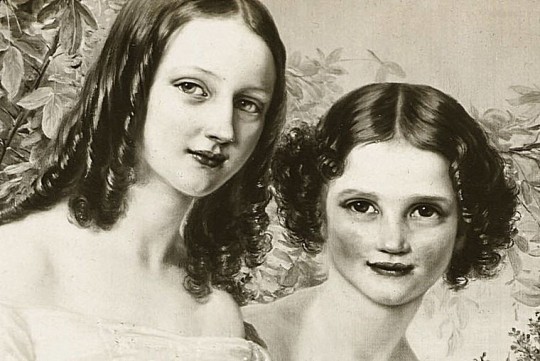
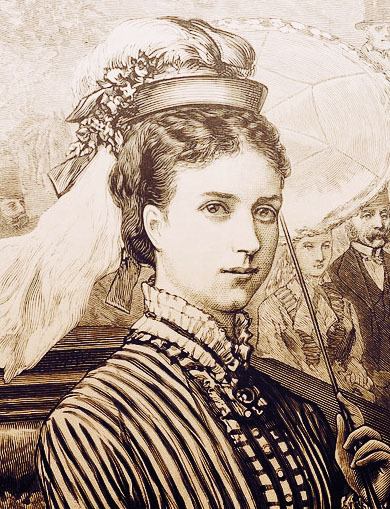
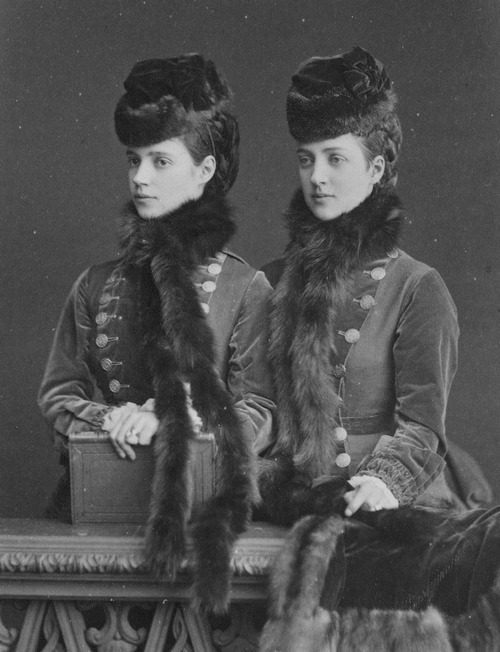
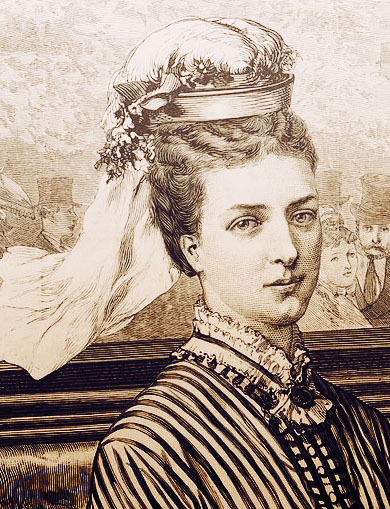
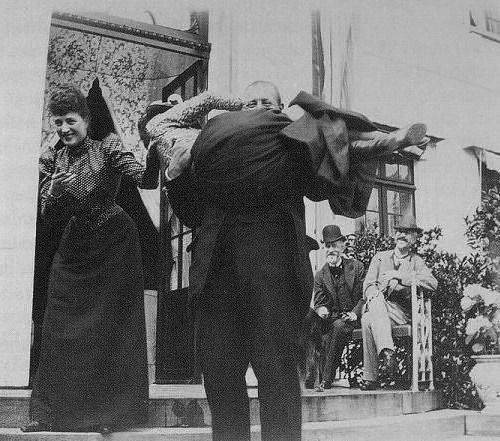
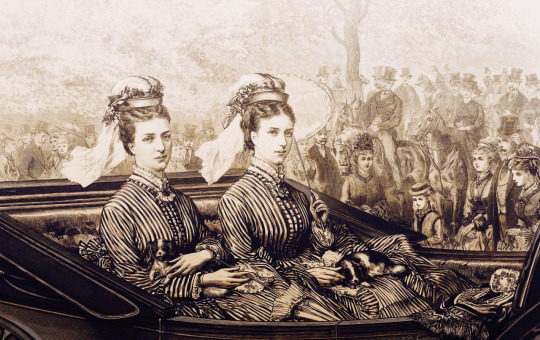
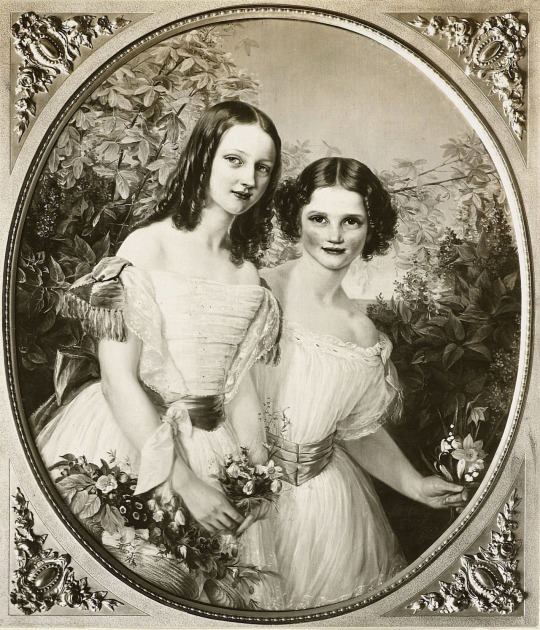
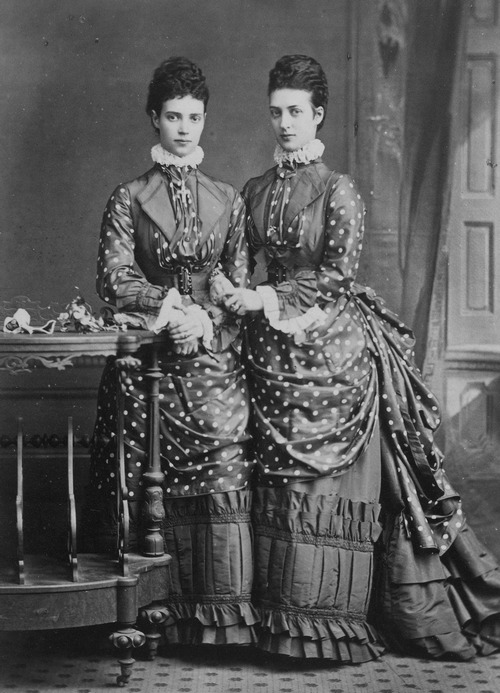
FOREVER SISTERS
Princess Alexandra Of Denmark and Princess Dagmar Of Denmark, the future QUEEN ALEXANDRA OF THE UNITED KINGDOM and EMPRESS MARIA FEODOROVNA OF ALL THE RUSSIAS
Daughters of King Christian of Demark and Queen Louise of Hesse-Kassel.
(person at the right on the bottom picture) Alexandra is the second eldest child and the eldest daughter of King Christian of Demark and Queen Louise of Hesse-Kassel, (born: 1 December 1844 Died: 20 November 1925) Alexandra of Denmark (full name: Alexandra Caroline Marie Charlotte Louise Julia) was Queen of the United Kingdom of Great Britain and Ireland and Empress of India as the wife of King-Emperor Edward VII. She was described as tall ( 5’ 5" (1.65 m) ) and very slender. She is sometimes described as equally as beautiful as her sisters, Dagmar and Thyra.
(person at the left of the bottom picture) Maria Feodorovna (Born: 26 November 1847 Died:13 October 1928), christened Dagmar, was a Danish princess and Empress of Russia as spouse of Tsar Alexander III (reigned 1881–1894). She was the second daughter of King Christian IX of Denmark and Louise of Hesse-Cassel; her siblings included Alexandra (Queen Consort of the United Kingdom), King Frederick VIII of Denmark and King George I of Greece. Her eldest son became the last Russian monarch, Emperor Nicholas II of Russia, whom she outlived by ten years.
Their nicknames are Alexandra the Beautiful and Dagmar the Clever
Princess Thyra post coming soon!
House Of Glücksburg 1/?
#glücksburg#romanov#saxe-coburg-gotha#alexandra of denmark#dagmar of denmark#queen alexandra of denmark#maria feodorovna#danish royalty#russian royalty#british
8 notes
·
View notes
Text
‘Fake’ Danish biscuits made in Indonesia sold in China
Fake Danish Butter Cookies – The history of Denmark as a unified kingdom began in the 8th century, but historic documents describe the geographic area and the people living there—the Danes—as early as 500 AD. These early documents include the writings of Jordanes and Procopius. With the Christianization of the Danes c. 960 AD, it is clear that there existed a kingship in Scandinavia, controlling the current Danish territory roughly speaking. Queen Margrethe II can trace her lineage back to the Viking kings Gorm the Old and Harald Bluetooth from this time, thus making the Monarchy of Denmark the oldest in Europe.[1] The area now known as Denmark has a rich prehistory, having been populated by several prehistoric cultures and people for about 12,000 years, since the end of the last ice age.
Denmark’s history has particularly been influenced by its geographical location between the North and Baltic seas, a strategically and economically important placement between Sweden and Germany, at the center of mutual struggles for control of the Baltic Sea (dominium maris baltici). Denmark was long in disputes with Sweden over control of Skånelandene and with Germany over control of Schleswig (a Danish fief) and Holstein (a German fief).
Eventually, Denmark lost these conflicts and ended up ceding first Skåneland to Sweden and later Schleswig-Holstein to the German Empire. After the eventual cession of Norway in 1814, Denmark retained control of the old Norwegian colonies of the Faroe Islands, Greenland and Iceland. During the 20th century, Iceland gained independence, Greenland and the Faroese became integral parts of the Kingdom of Denmark and North Schleswig reunited with Denmark in 1920 after a referendum. During World War II, Denmark was occupied by Nazi Germany, but was eventually liberated by British forces of the Allies in 1945,[2] after which it joined the United Nations. In the aftermaths of World War II, and with the emergence of the subsequent Cold War, Denmark was quick to join the military alliance of NATO as a founding member in 1949.
Fake Danish Butter Cookies – Denmark is one of the oldest states in Europe and the oldest kingdom in the world. The current monarch, Queen Margrethe II – who became regnant in April 1972 – can also point to the oldest lineage in Europe, dating back to early 900 AD and Viking King Gorm. The Queen is very popular among Danes and visitors alike. During major royal festivals thousands of people gather in the square in front of Amalienborg Castle to wave flags and cheer for the Queen and her family.
The Danish language belongs to the northern branch of the Germanic language group, and bears a strong resemblance to other Scandinavian tongues. Famed Danish writers include Hans Christian Andersen, whose fairy tales have been translated into more languages than any other book except the Bible; the theologian and philosopher Søren Kierkegaard, a forerunner of modern existentialism; and Karen Blixen, who penned “Out of Africa” and “Babette’s Feast”.
From Vikings to Lutheranism
Denmark’s place in European history essentially began with the Viking Age, around 800 AD, when the Danes became notorious for plundering churches and monasteries. By 878 the Danes had conquered northern and eastern England, and by the 11th century King Canute (1014-35) ruled over a vast kingdom that included present-day Denmark, England, Norway, southern Sweden, and parts of Finland. Christianity was introduced to Denmark in 826 and became widespread during Canute’s reign. After his death, Canute’s empire disintegrated.
Fake Danish Butter Cookies – During the 13th century, Waldemar II (1202-41) conquered present-day Schleswig-Holstein, Pomerania, Mecklenburg, and Estonia and re-established the nation as a great power in Northern Europe. A civil war, however, later broke out between the nobles and the king as each vied for control of the country. Christopher II (1320-32) was forced to make major concessions to the nobles and clergy at the expense of royal power, which was also eroded by the influence of the German merchants of the Hanseatic Leauge. Waldemar IV (1340-75) succeeded in restoring royal authority, however, and his daughter Margaret I (1387-1412) created the Kalmar Union, which included Denmark, Norway, Sweden, the Faeroe Islands, Iceland, Greenland, and part of Finland. In 1520 Sweden and Finland revolted, seceding in 1523, but the union continued until 1814.
In 1448 the House of Oldenburg was established on the throne in the person of Christian I. During the reign of Christian III (1534-59), the Reformation swept through the country, leaving burnt churches and civil warfare in its wake. Fighting ended in 1536 with the ousting of the hitherto powerful Catholic Church and the establishment of a national Lutheran Church headed by the monarch.
War with Sweden, allied to Napoleon, the road to democracy
King Christian IV ruled for the first half of the 17th century, and squandered fabulous wealth by leading his subjects into the disastrous Thirty Years War with Sweden. In the process, Denmark lost both territory and money, and the king an eye. Even more disastrous were the losses to Sweden incurred some decades later by Christian’s successor, King Frederick III.
The series of wars with Sweden resulted in territorial losses, but the Great Northern War (1700-21) brought some restoration of Danish power in the Baltic. The 18th century was otherwise a period of internal reform, which included the abolition of serfdom and land reforms.
In 1814, Denmark, which had sided with Napoleonic France after British attacks on Copenhagen in 1801 and 1807, was forced to cede Norway to Sweden and Helgoland to England. In 1848, a Prussian-inspired revolt in Schleswig-Holstein ended without a victor, but in 1864, Schleswig-Holstein and Lauenburg were lost in a new war with Prussia. Despite these major territorial losses, Denmark prospered economically in the 19th century and underwent further reforms. In 1849, King Frederick VII (1848-63) authorized a new constitution instituting a representative form of government, as well as wide-ranging social and education reforms.
Denmark and Germany, more social reform
Fake Danish Butter Cookies Denmark’s relations with its southern neighbours, particularly Prussia, have played a decisive role in constitutional developments. In 1866 a new Constitution was adopted for the dramatically reduced area of Denmark after its defeat at the hands of Prussia in 1864. The 1866 Constitution included strict limits on the almost universal male suffrage that had been recognised by the 1849 Constitution.
In 1915, during the First World War (in which Denmark remained neutral), broad agreement was reached on constitutional reform. Universal suffrage was introduced, so that women and servants could also vote. While since 1849 there had been elections by majority vote in single constituencies, in 1918 an electoral system was introduced combining proportional representation with elections in individual constituencies. Although since the beginning of the century there had been a desire to introduce referenda, partly by the Social Democrats and partly the Radical Liberals, which were in power during the war, the 1915 Constitution only contained a provision for referenda in relation to constitutional change.
At the end of the First World War, North Schleswig was returned to Denmark after a plebiscite, and the present southern border with Germany was established.
Blossoming of culture
In the post-war period, Danish culture continued to prosper.
Fake Danish Butter Cookies Internationally, the best-known Danish film director was Carl Dreyer (1889-1968), who directed numerous films, including the 1928 masterpiece “La Passion de Jeanne d’Arc”, which was acclaimed for its rich visual textures and innovative use of close-up. Carl Nielsen, Demark’s greatest composer, wrote over 100 works, ranging from string quartets to opera; he is the author of the utterly charming choral work “Springtime in Funen” (Funen was Nielsen’s birthplace); a clarinet concerto, arguably the finest of the 20th century; and six symphonies, of which the fourth, “The Inextinguishable”, and the fifth, are the best known.
On the political front, in 1933 (as Hitler rose to power in Germany) the Great Social Reforms were introduced in Denmark, essentially laying the foundations for the country’s modern welfare state.
World War II and post-war culture
At the beginning of World War II, despite a declaration of neutrality, Denmark was occupied by Germany (Apr. 9, 1940). On May 5, 1945, the Germans capitulated, and the country was liberated. Iceland had become fully independent in 1944. The Faeroe Islands received home rule in 1948, and Greenland became an integral part of Denmark under the new constitution of 1953 and received home rule in 1979.
In the modern era, Danish culture has continued to move ahead. Danish cinema has attracted attention with the wonderful “Babette’s Feast”, and with the adaptation of Danish author, Martin Andersen Nexø’s book “Pelle the Conqueror”. Film director Lars von Trier leads the younger generation of Danish film makers on the international film scene. Peter Høeg, famous for “Miss Smilla’s Feeling for Snow”, is Denmark’s most prominent contemporary author. The Royal Danish Ballet, which performs in Copenhagen’s Royal Theatre from autumn to spring, is regarded as northern Europe’s finest.
In other cultural activities, Denmark is also a leader in industrial design, with a style marked by cool, clean lines applied to everything from architecture to furniture and silverwork.
Denmark and the EU
Denmark joined the European Community in 1973. From 1982, under the Conservative Prime Minister, Poul Schlüter, who headed a succession of minority governments, Denmark became increasingly committed to European integration. Danish voters, however, initially rejected the European Community’s treaty on the European Union (the Maastrict treaty) on June 2, 1992; but in a new round of voting on May 18, 1993, a referendum approved an amended treaty.
TIMELINE: DANISH HISTORY
787-1066
The Viking Era. Danish kings Sveyn Forkbeard and Canute the Great rule a North Sea-empire consisting of present-day Denmark, Norway and England.
950
Harald Bluetooth becomes king
965
Harald is baptized and later claims to have converted all Danes to Christianity
1202
Valdemar the victorious: The reign of Valdemar II sees the Danish Kingdom become exceptionally strong, as the frontier expands to the Elbe and the Baltic.
1219
The first use of Dannebrog, the national flag of Denmark, though the flag as it looks today (red background with a white cross) only comes into being 150 years later.
1332-1340
As a result of expensive and failed wars, all taxes have to be handed over to creditors. The Danish Crown has no income and no king is appointed.
1340
Valdemar IV succeeds in restoring royal authority.
1386
The Great Hanseatic War: Seventy-five Hanseatic towns attack Danish castles along the Sound.
1397
The beginning of the Kalmar Union, uniting Norway, Sweden and Denmark.
1495
The first book in Danish is printed – The Danish Rhymed Chronicle.
1520
The Stockholm bloodbath: Christian II becomes the King of Sweden and restores the Kalmar Union, but to maintain power he crushes every conceivable form of opposition.
1526
Frederick I declares the Danish Church independent.
1536
Civil War: Christian III leads an army of mercenaries into Copenhagen, and the citizens give up hope of asserting themselves politically. Reformation: the Danish Church is re-established as a Lutheran state church with the king as its head.
1563-70
The Scandinavian Seven Years War.
1660
Denmark regains the island of Bornholm from Sweden. Absolutism (in the form of hereditary monarchy) is introduced.
1801
Lord Nelson defeats the Danes in the Battle of Copenhagen.
1805
Hans Christian Andersen is born.
1814
Denmark goes bankrupt and has to cede Norway to Sweden.
1848
Frederick VII is crowned.
1849
Frederick VII signs the Constitutional Act of the Danish Realm – abolishing absolutism and introducing democracy.
1864
Prussia and Austria declare war on Denmark and within four days Danish troops are forced to surrender due to the enemy’s military superiority.
1901
Introduction of the law that no government can rule against a parliamentary majority.
1914
Beginning of World War I. Denmark is neutral.
1915
Women are given the right to vote for the Folketing (Danish parliament).
1933
Social reforms securing full insurance against unemployment, sickness and old age is introducede. Medical treatment and homes for the elderly also become free of charge.
1940
Denmark is occupied by Nazi Germany on April 9.
1943
In October, more than 7,000 Danish Jews are warned of their pending arrest by Nazi forces and escape across the Sound to neutral Sweden.
1945
On March 4-5 Nazi forces surrender to Great Britain.
1948
Denmark accepts American Marshall Plan aid as a means of economic reconstruction.
1949
Denmark abandons its policy of neutrality and joins the North Atlantic Treaty Organisation (NATO).
1951
The Nordic Council is established between Denmark, Norway, Sweden, Finland and Iceland.
1954
The state introduces financial support for all students, which enables them to study no matter what their parents’ income.
1972
Margarethe II is crowned.
1973
Denmark joins the European Community (EC) after a referendum.
1992
The Maastricht Treaty is rejected by the Danish people in a referendum.
1993
The Maastricht Treaty is approved with four specific opt-outs for Denmark in a new referendum
A little cookie history: The first cookies were created by accident. Cooks used a small amount of cake batter to test their oven temperature before baking a large cake. These little test cakes were called “koekje”, meaning “little cake” in Dutch.
Originally called “little cakes,” cookies are made with sweet dough or batter, baked in single-sized servings and eaten out-of-hand. Perfect for snacking or as dessert, cookies are consumed in 95.2 percent of U.S. households. Americans alone consume over 2 billion cookies a year, or 300 cookies for each person annually.
Cookies are most often classified by method of preparation – drop, molded, pressed, refrigerated, bar and rolled. Their dominant ingredient, such as nut cookies, fruit cookies or chocolate cookies, can also classify them. Whether gourmet, soft or bite-sized cookies, new categories are always cropping up as the American appetite for cookies continues to grow.
History
The word cookie originally came from the Dutch keokje, meaning “little cake.” In addition, the Dutch first popularized cookies in the United States. The British took a liking to them in the 19th century, incorporating them into their daily tea service and calling them biscuits or sweet buns, as they do in Scotland.
Sometime in the 1930s, so the story goes, a Massachusetts innkeeper ran out of nuts while making cookies. Therefore, she substituted a bar of baking chocolate, breaking it into pieces and adding the chunks of chocolate to the flour, butter and brown sugar dough. The Toll House Cookie, so named after the inn in which it was served, was a hit.
Historians credit the innkeeper, Ruth Wakefield, with inventing what has since become an American classic – the chocolate chip cookie.
The earliest cookie-style cakes are thought to date back to seventh-century Persia, one of the first countries to cultivate sugar. There are six basic cookie styles, any of which can range from tender-crisp to soft. A drop cookie is made by dropping spoonfuls of dough onto a baking sheet. Bar cookies are created when a batter or soft dough is spooned into a shallow pan, then baked, cooled and cut into bars.
Hand-formed (or molded) cookies are made by shaping dough by hand into small balls, logs, crescents and other shapes.
Pressed cookies are formed by pressing dough through a COOKIE PRESS (or PASTRY BAG) to form fancy shapes and designs.
Refrigerator (or icebox) cookies are made by shaping the dough into a log, which is refrigerated until firm, then sliced and baked. Rolled cookies begin by using a rolling pin to roll the dough out flat; then it is cut into decorative shapes with COOKIE CUTTERS or a pointed knife.
Other cookies, such as the German SPRINGERLE, are formed by imprinting designs on the dough, either by rolling a special decoratively carved rolling pin over it or by pressing the dough into a carved COOKIE MOLD. In England, cookies are called biscuits , in Spain they’re galletas , Germans call them keks, in Italy they’re biscotti and so on.
The first American cookie was originally brought to this country by the English, Scots, and Dutch immigrants. Our simple “butter cookies” strongly resemble the English tea cakes and the Scotch shortbread.
The Southern colonial housewife took great pride in her cookies, almost always called simply “tea cakes.” These were often flavored with nothing more than the finest butter, sometimes with the addition of a few drops of rose water.
In earlier American cookbooks, cookies were given no space of their own but were listed at the end of the cake chapter. They were called by such names as “Jumbles,” “Plunkets,” and “Cry Babies.” The names were extremely puzzling and whimsical.
There are hundreds upon hundreds of cookie recipes in the United States. No one book could hold the recipes for all the various types of cookies.
Butter cookies (or butter biscuits), known as Brysslkex, Sablés, and Danish biscuits, are unleavened cookies consisting of butter, flour, and sugar. They are often categorized as a “crisp cookie” due to their texture, caused in part because of the quantity of butter and sugar. It is generally necessary to chill the dough to enable proper manipulation and handling. Butter cookies at their most basic have no flavoring, but they are often flavored with vanilla, chocolate, and coconut, and/or topped with sugar crystals. They also come in a variety of shapes such as circles, squares, ovals, rings, and pretzel-like forms, and with a variety of appearances, including marbled, checkered or plain. Using piping bags, twisted shapes can be made. In some parts of the world such as European countries and North America, butter cookies are often served around Christmas time.
In Denmark, butter cookies in tin boxes are produced and sold there, and are also exported to other countries.
Around this time of year, people with whom you do business send you food gifts in recognition of the special relationship you have with them. If you’ve been really good for business, they’ll send you a massive hamper flown in from somewhere like Zabar’s or Dean & Deluca. If you’re not quite at the top of their client list but still spend money with them, you get the medium-sized basket from Mrs. Beasley and Miss Grace. And if all you did was talk about maybe buying something next year when the economy improves, but they don’t want to write you off just yet, you get the blue tin of Danish butter cookies.
Well, I hail from a Danish family and I’m here to tell you that those cookies all have names and, stunningly, most of them are actually reasonably authentic, mass-production quality issues notwithstanding.
Useless trivia? Well, consider this: you could be in a bar talking to someone who, unbeknownst to you, is a Dane. With your impressive knowledge of Danish cookie lore, you could end up invited to his or her apartment to feed him or her these cookies in bed. (What? What? IT COULD HAPPEN.)
Finsk brød. These flat, oblong biscuits, whose name means “Finnish bread”, are one of the traditional desserts at Christmas, alongside rice pudding with hot cherry sauce. I’m not honestly sure why they’re called Finnish, honestly, but they’re always called that, or else finskes (“little Finnish things”).
Vanille kranse. Danish for “vanilla wreaths”, these are the U-shaped cookies. They’re the cookie adaptation of a traditional Danish wedding cake (called kransekage and made of a tower of almond-flavored rings, in the center of which is often placed a bottle of liquor) and they’re supposed to be round, but apparently manufacturing round extruded cookies is hard for modern machinery.
Kringle. These are usually called Danish pretzels in English. They’re by far the most delicate cookie to make. My mother made dozens and dozens and dozens of butter cookies every Christmas, and you could tell when it was time to make kringle because we kids would get set to some task–any task–by my father, who knew better than to let us anywhere near my mother for that hour or so.
Kanelkager. Literally “cinnamon cakes”, these are supposed to have cinnamon sugar sprinkled on top, and they’re normally very hard. I can’t honestly say I taste the cinnamon in the usual Royal Dansk tin of cookies (where you can tell them apart by their dark color), but when they’re made properly they taste light and gently spicy, made with real cinnamon instead of cassia cinnamon (which is rougher and much spicier).
Butter cookies. Boy, they really phoned it in on this one. These are the light-colored round ones with the coarse sugar on top. They’re just plain old butter cookies topped with sugar. Theoretically you could call these smørrekikser (butter cookies) but that just makes you sound pretentious, as though referring to any of these cookies by their Danish name doesn’t already accomplish that.
INGREDIENTS
2 cups all-purpose flour
1/2 teaspoon salt
1/4 teaspoon baking powder
2 sticks (1 cup) unsalted butter, softened
1 cup sugar
1 large egg
1 teaspoon vanilla
PREPARATION
Into a bowl sift together flour, salt, and baking powder. In a large bowl with an electric mixer beat butter until creamy. Gradually add sugar, beating until mixture is light and fluffy. Add egg and vanilla and beat until combined well. Gradually add flour mixture, beating until mixture just forms a dough.
Divide dough between 2 large sheets of wax paper and form each half into a 10- x 1 1/2-inch log, wrapping it in wax paper. Chill logs until firm, at least 4 hours, and up to 5 days. Dough may be frozen, wrapped in foil, 2 months. Let dough soften slightly before cutting. Preheat oven to 375°F. and lightly butter a baking sheet.
Cut dough into 1/8-inch-thick slices and arrange slices about 1/2 inch apart on baking sheet. Bake cookies in batches in middle of oven until golden around edges, 10 to 12 minutes, and transfer with a metal spatula to a rack to cool. Cookies may be kept in an airtight container at room temperature 5 days.
0 notes
Text
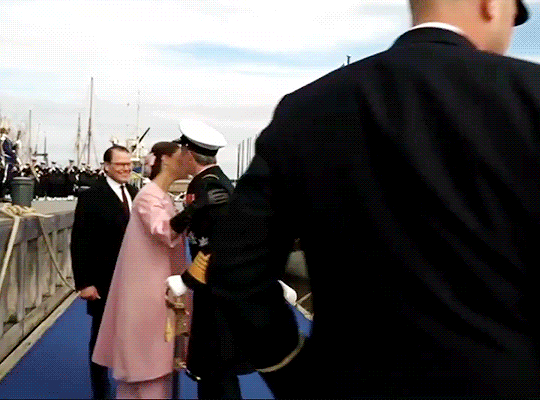
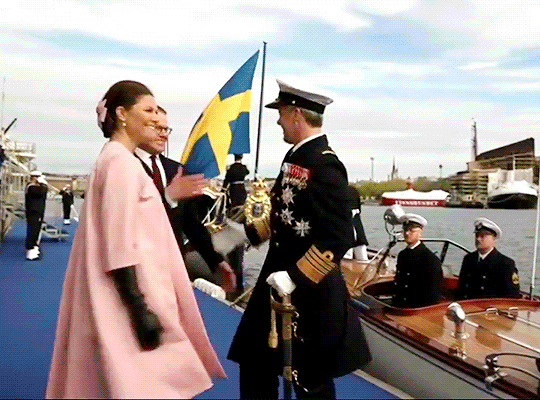



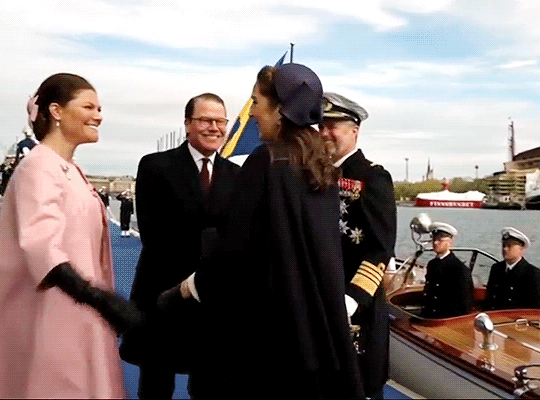
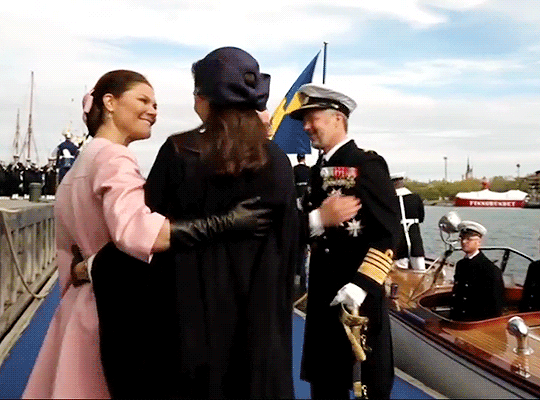
Swedish and Danish Royal Families - Crown Princess Victoria and Prince Daniel of Sweden greeted King Frederik X And Queen Mary of Demark, as the King and Queen of Denmark arrived on the Royal Barge Vasaorden at Skeppsbron in Stockholm, Sweden | May 6, 2024
#royaltyedit#theroyalsandi#frederik x#king frederik x#queen mary#crown princess victoria#prince daniel#king frederik x of denmark#queen mary of denmark#crown princess victoria of sweden#prince daniel of sweden#swedish royal family#danish royal family#my gif
142 notes
·
View notes
Text


Swedish and Danish Royal Families - Crown Princess Victoria and Prince Daniel of Sweden greeted King Frederik X And Queen Mary of Demark, as the King and Queen of Denmark arrived on the Royal Barge Vasaorden at Skeppsbron in Stockholm, Sweden (Photo by Clément Morin) | May 6, 2024
#royaltyedit#theroyalsandi#frederik x#king frederik x#queen mary#crown princess victoria#prince daniel#king frederik x of denmark#queen mary of denmark#crown princess victoria of sweden#prince daniel of sweden#swedish royal family#danish royal family#my edit
78 notes
·
View notes
Text




Swedish and Danish Royal Families - King Carl XVI Gustaf and Queen Silvia of Sweden greeted King Frederik X And Queen Mary of Demark, as the King and Queen of Denmark arrived on the Royal Barge Vasaorden at Skeppsbron in Stockholm, Sweden (Photo by Hanne Juul) | May 6, 2024
#royaltyedit#theroyalsandi#carl xvi gustaf#frederik x#king carl xvi gustaf#king frederik x#queen silvia#queen mary#king carl xvi gustaf of sweden#king frederic x of sweden#queen silvia of sweden#queen mary of denmark#swedish royal family#danish royal family#my edit
80 notes
·
View notes
Photo
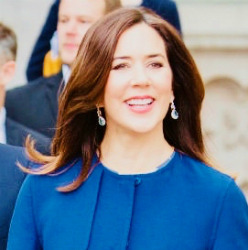
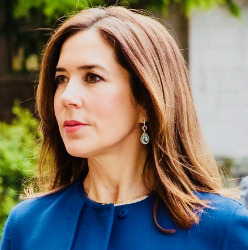


Through the Years → Mary, Crown Princess of Denmark (509/∞)
4 May 2018 | Her Royal Highness the Crown Princess Mary of Denmark visits the University of Washington during the launch of a new chapter of cultural exchange between Denmark and the United States in Seattle, Washington. (Photo by Mat Hayward/Getty Images)
14 notes
·
View notes
Photo

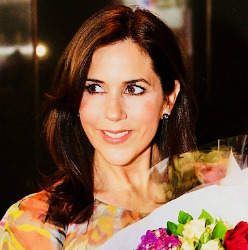
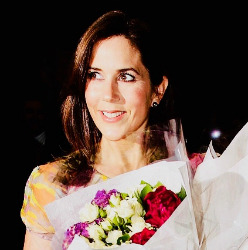
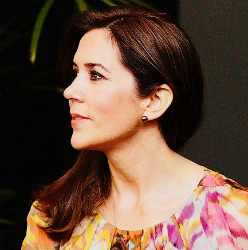
Through the Years → Mary, Crown Princess of Denmark (277/∞)
21 November 2011 | Princess Mary of Denmark arrives at the Sofitel Wentworth during her visit to Australia in Sydney, Australia. Princess Mary and Prince Frederik are on their first official visit to Australia since 2008. The Royal visit begins in Sydney, before heading to Melbourne, Canberra and Broken Hill. (Photo by Brendon Thorne/Getty Images)
10 notes
·
View notes
Photo
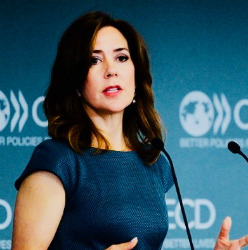


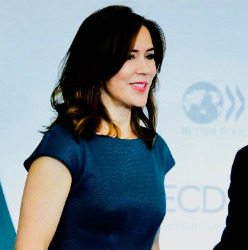
Through the Years → Mary, Crown Princess of Denmark (473/∞)
6 June 2017 | Danish Princess Mary addresses the opening of the OECD Forum at the OECD headquarters in Paris. (Photo credit ERIC PIERMONT/AFP/Getty Images)
9 notes
·
View notes
Photo
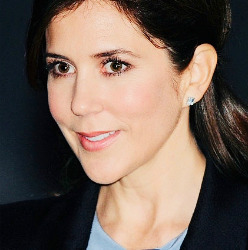

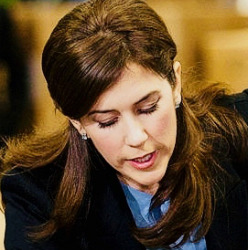

Through the Years → Mary, Crown Princess of Denmark (274/∞)
2 November 2011 | Prince William And Catherine, Duchess Of Cambridge Accompanied By Prince Frederik And Princess Mary Of Denmark Visit The Unicef Supply Division Centre In Copenhagen, Denmark. (Photo by Julian Parker/Mark Cuthbert/UK Press via Getty Images)
#Queen Mary#Princess Mary#Demark#2011#Julian Parker#Mark Cuthbert#UK Press via Getty Images#through the years: Mary
7 notes
·
View notes